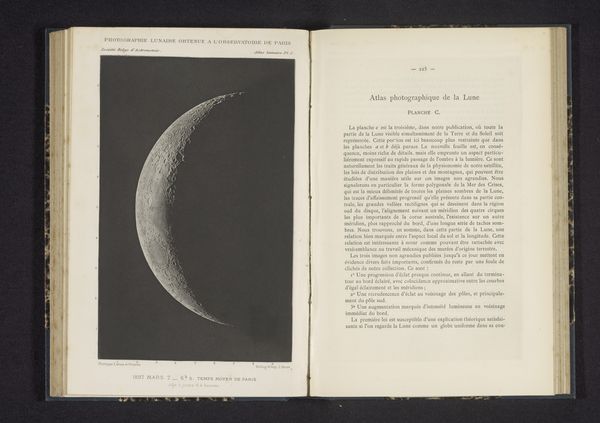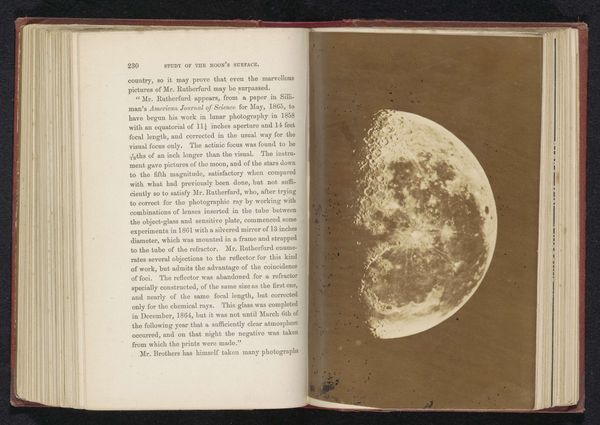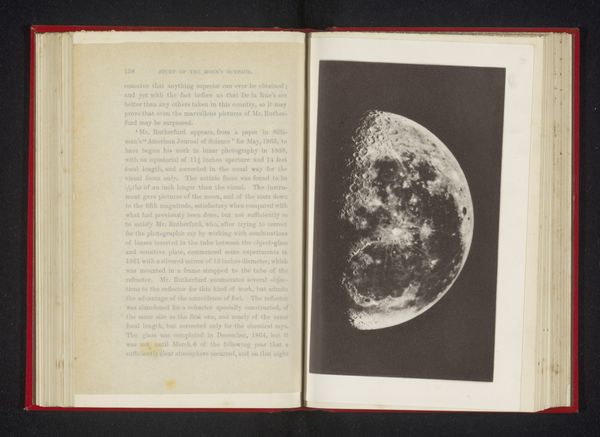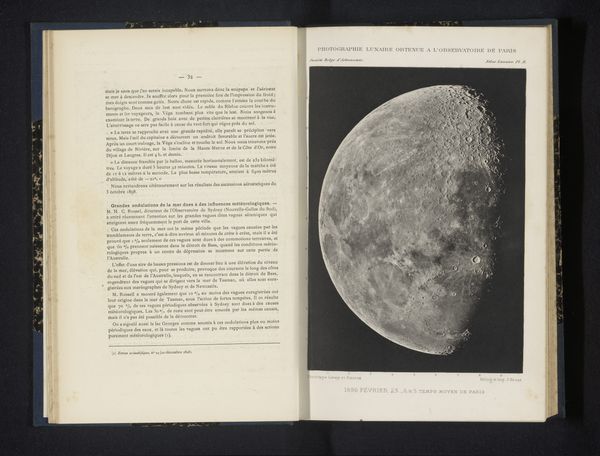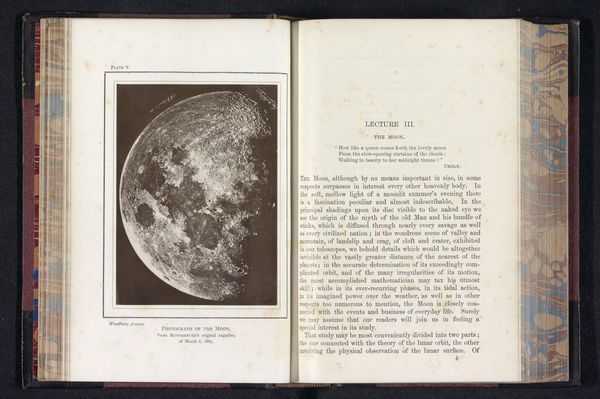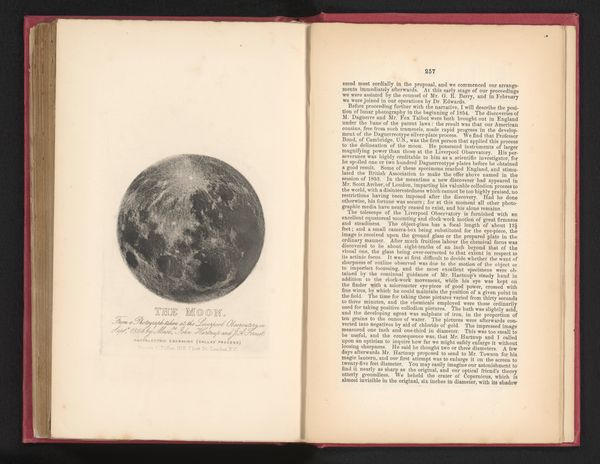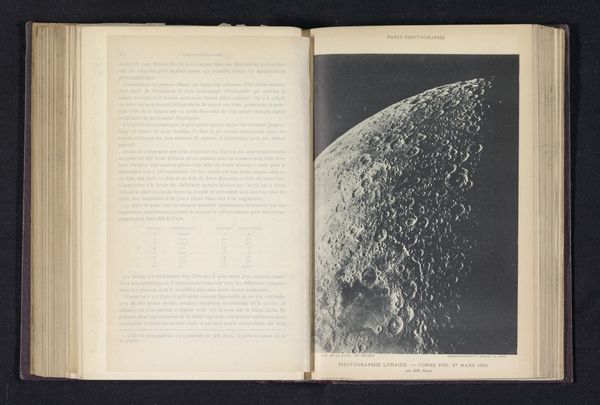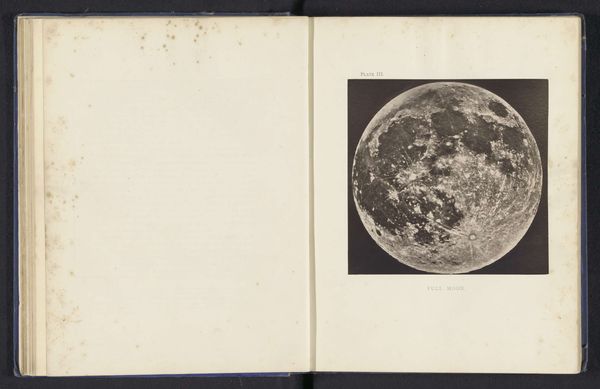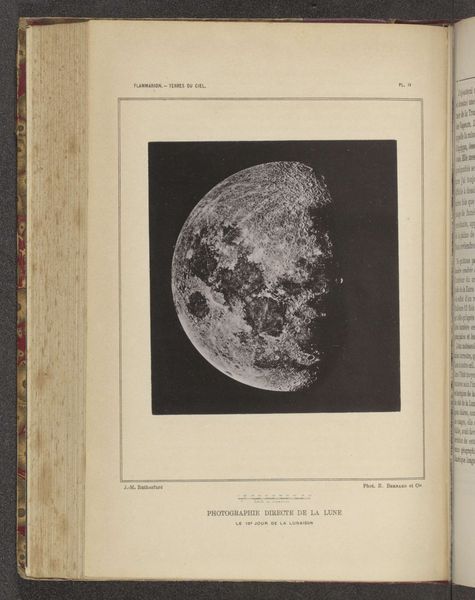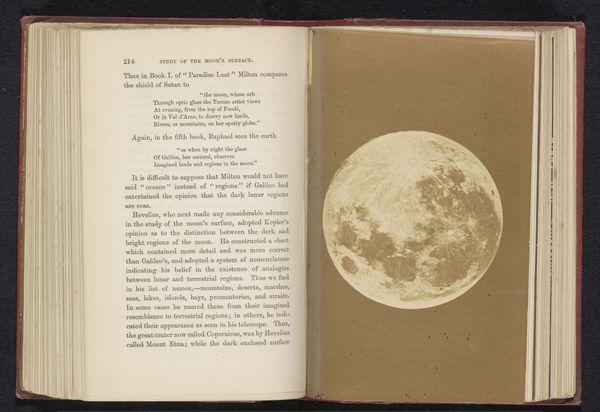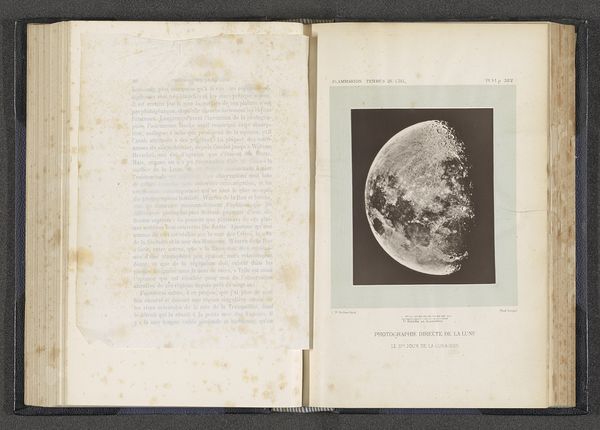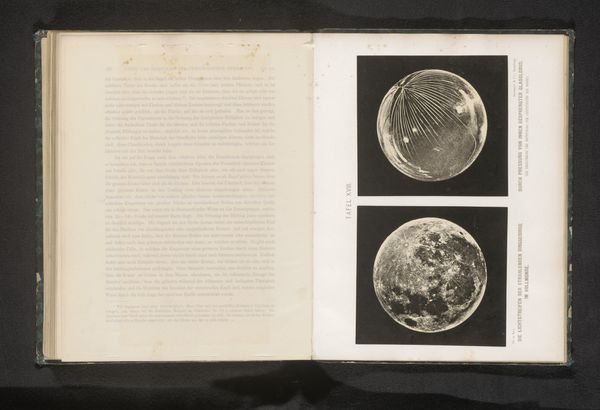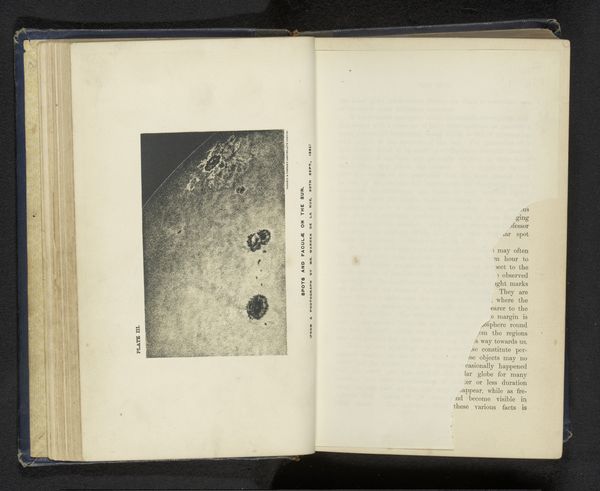
#
aged paper
#
homemade paper
#
paperlike
#
folded paper
#
thick font
#
paper medium
#
thin font
#
historical font
#
columned text
#
small font
Dimensions: height 144 mm, width 99 mm
Copyright: Rijks Museum: Open Domain
This is an early photograph of the Moon, or "La Lune", as it is written here, taken sometime in the late 19th century, reproduced in a book. Even at this early stage of astrophotography, the moon, a celestial symbol, holds a long, cross-cultural history. We can trace its presence back to ancient mythologies, where it often embodies cycles, changes, and the feminine. Think of Artemis, the Greek goddess of the hunt and moon, ever-changing, ever-present. The crescent shape, as seen here, has had a continuous visual echo over centuries. It is a symbol that appears in numerous contexts: religious, such as the Islamic star and crescent; artistic, where it might signify dreams or illusions; and even in the subconscious realm, representing the hidden aspects of the self. Over time, the moon has taken on myriad meanings, reflecting our deepest fears, hopes, and fascinations. Even in its scientific depiction, a powerful force engages us, reminding us of our connection to the cosmos and the endless dance of light and shadow, a symbol which continues to evolve, taking new forms as human understanding expands.
Comments
No comments
Be the first to comment and join the conversation on the ultimate creative platform.
